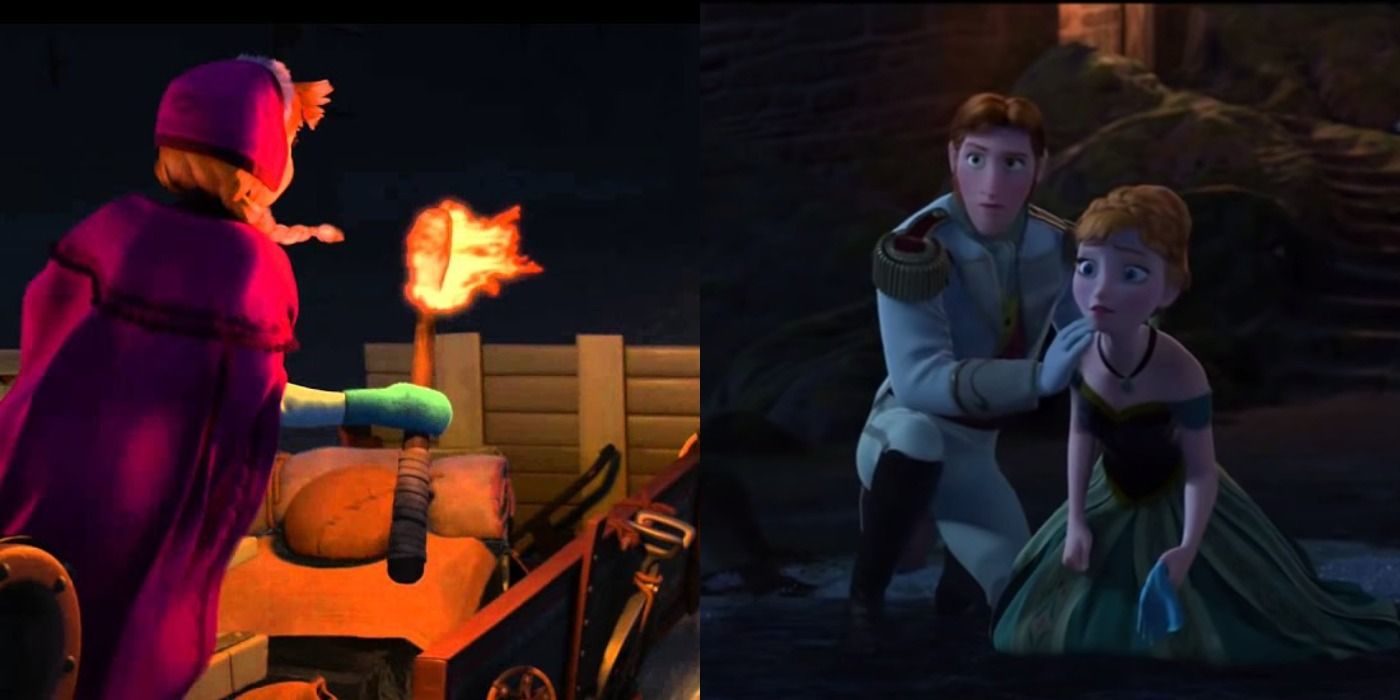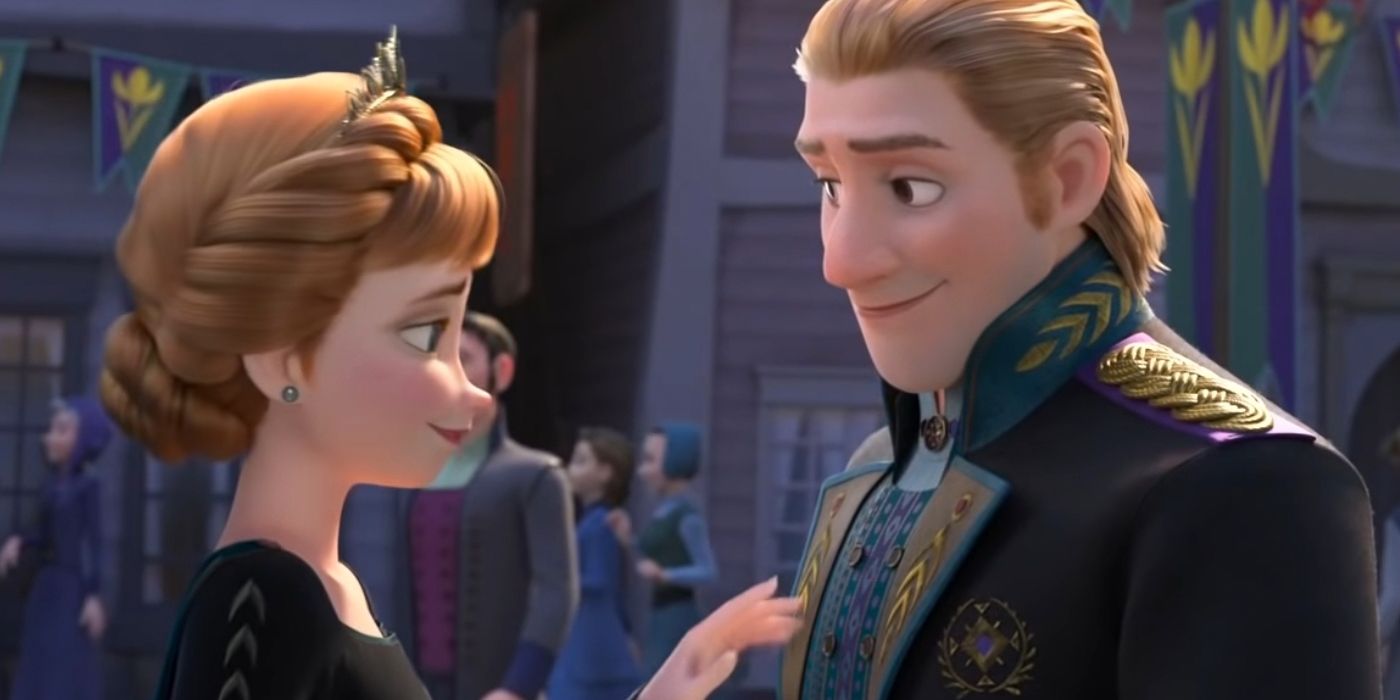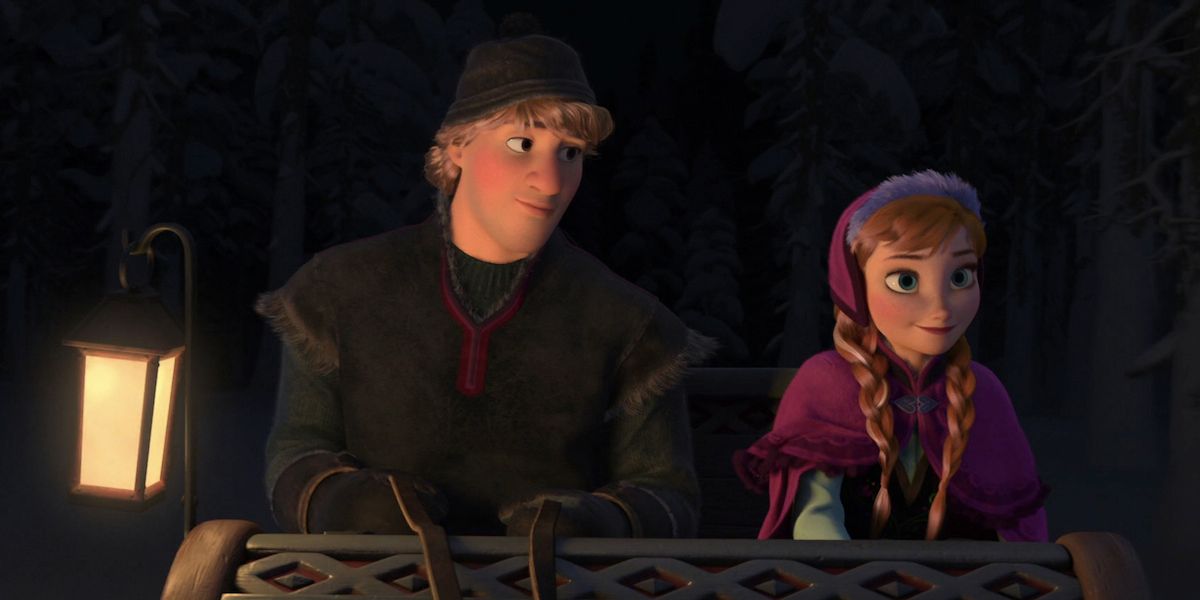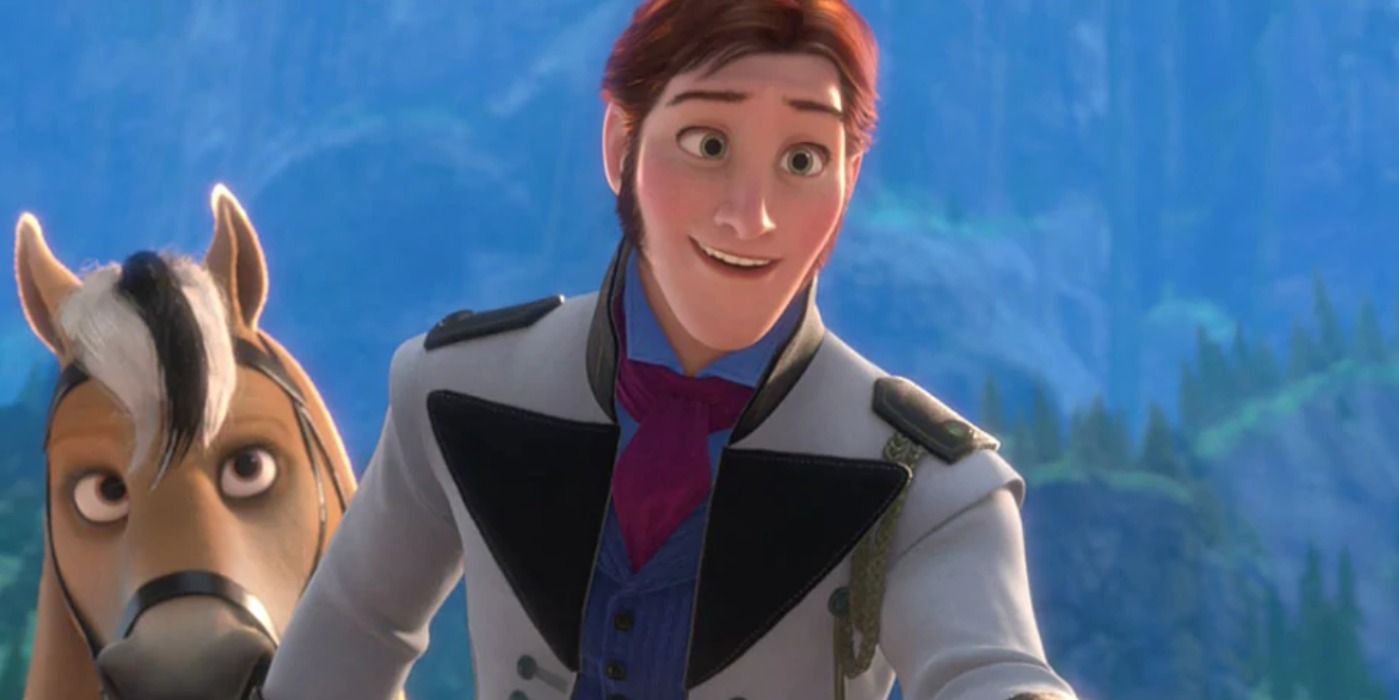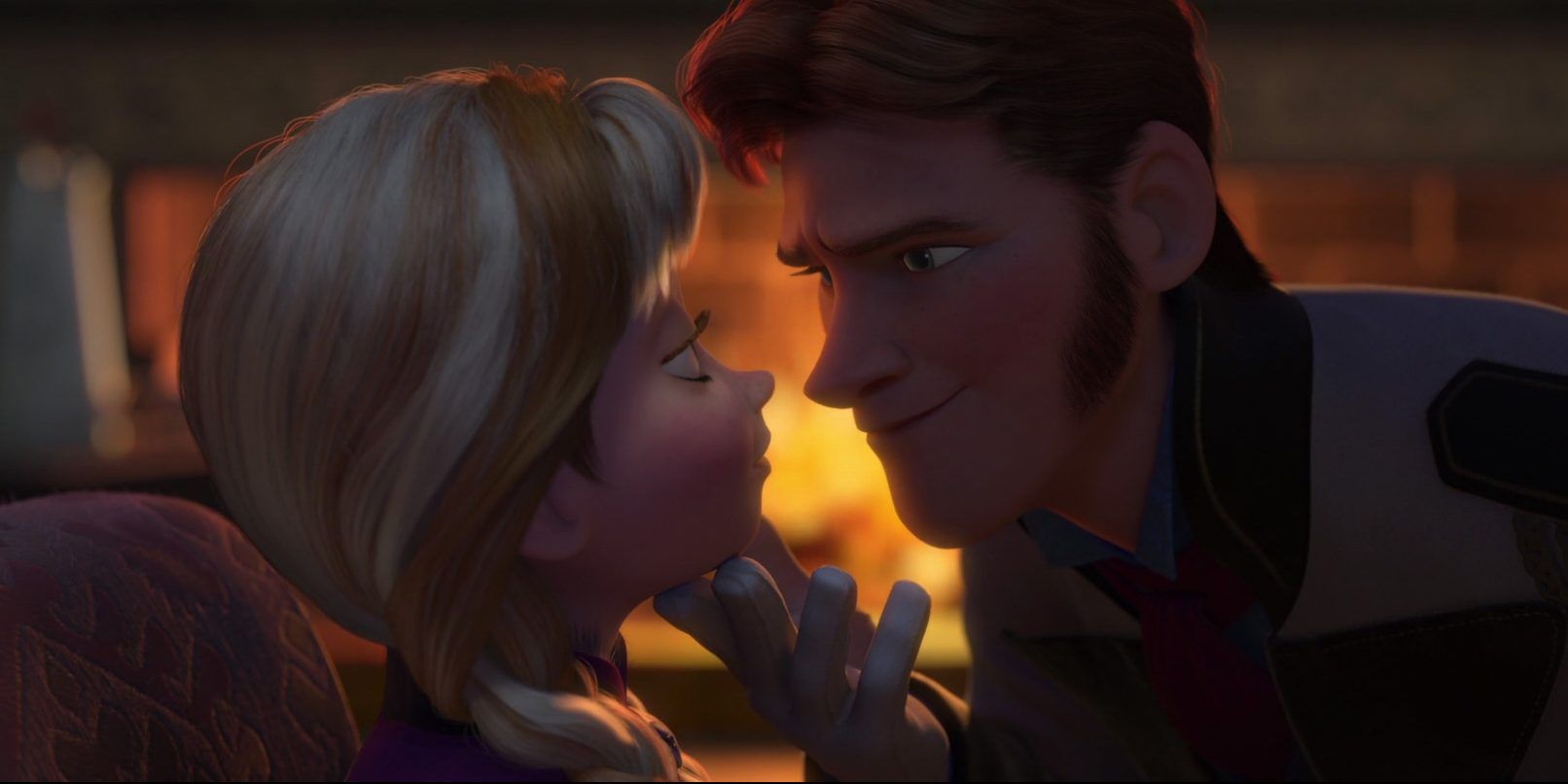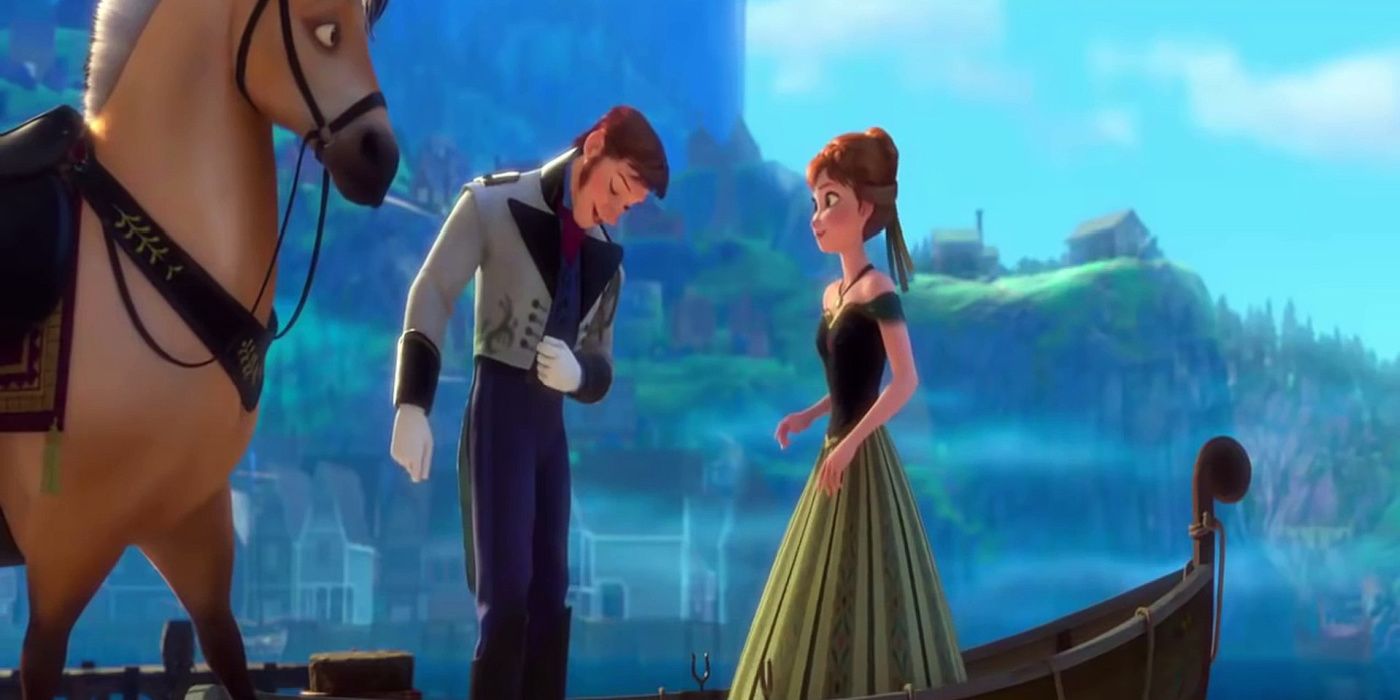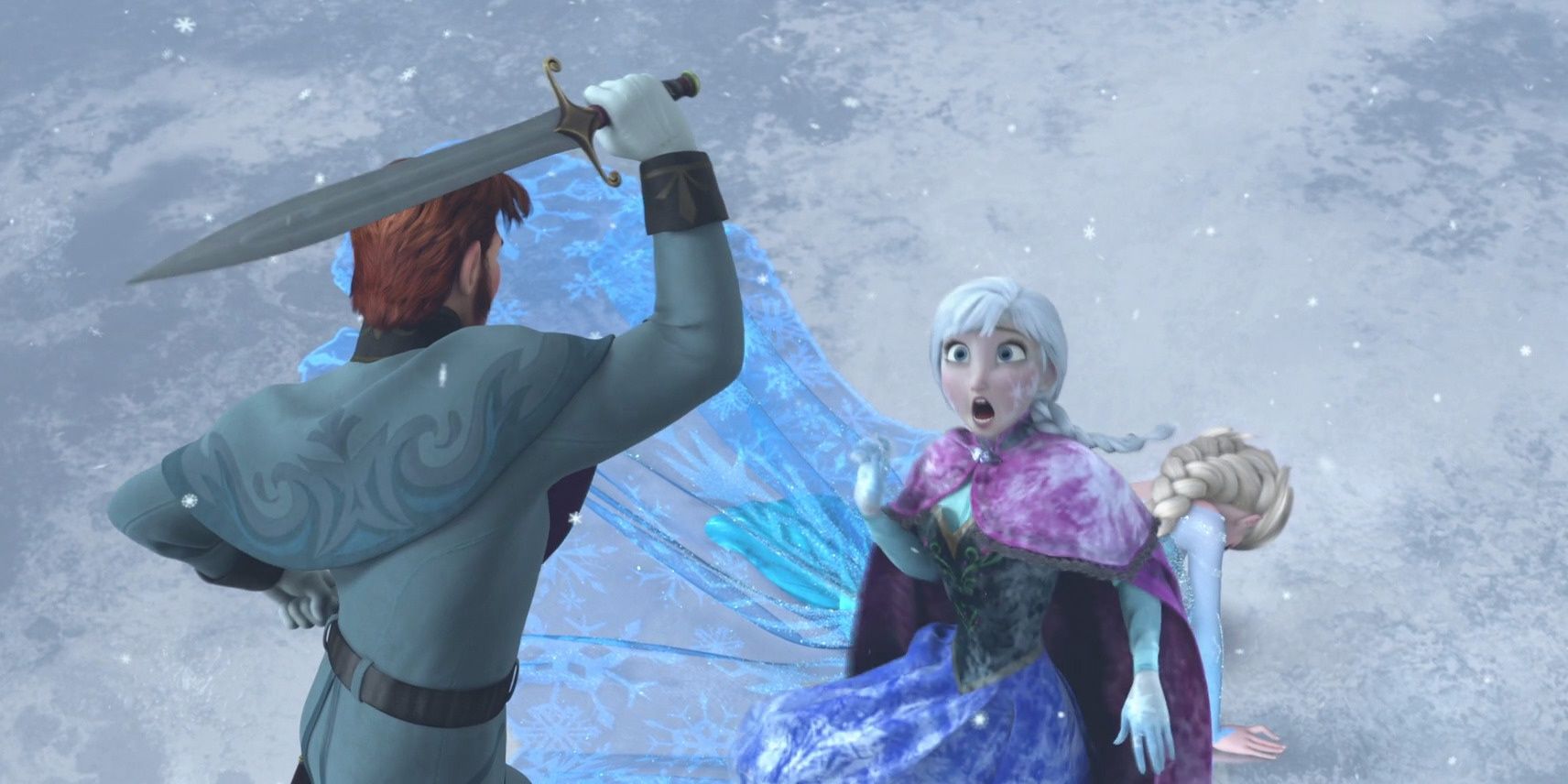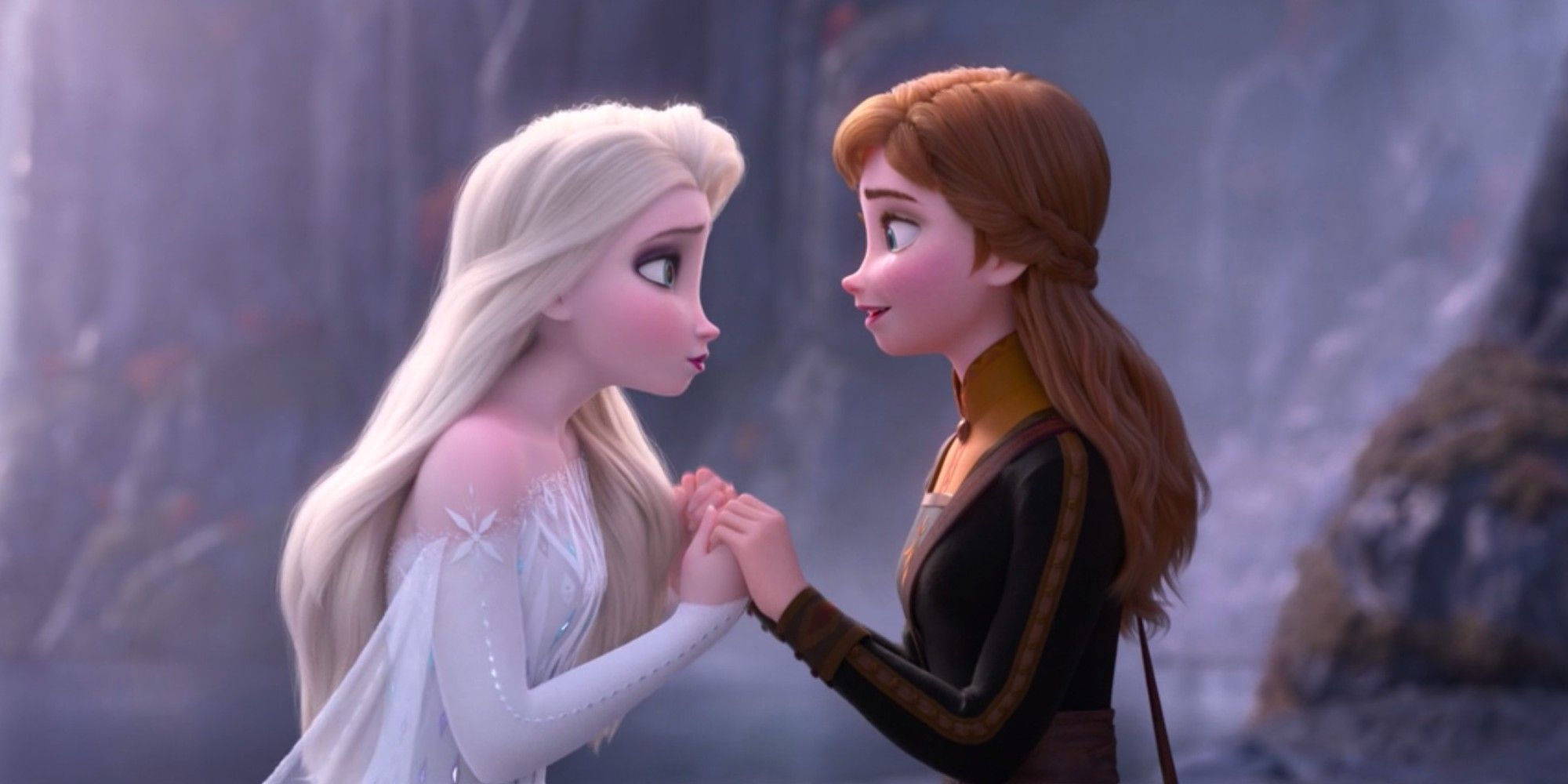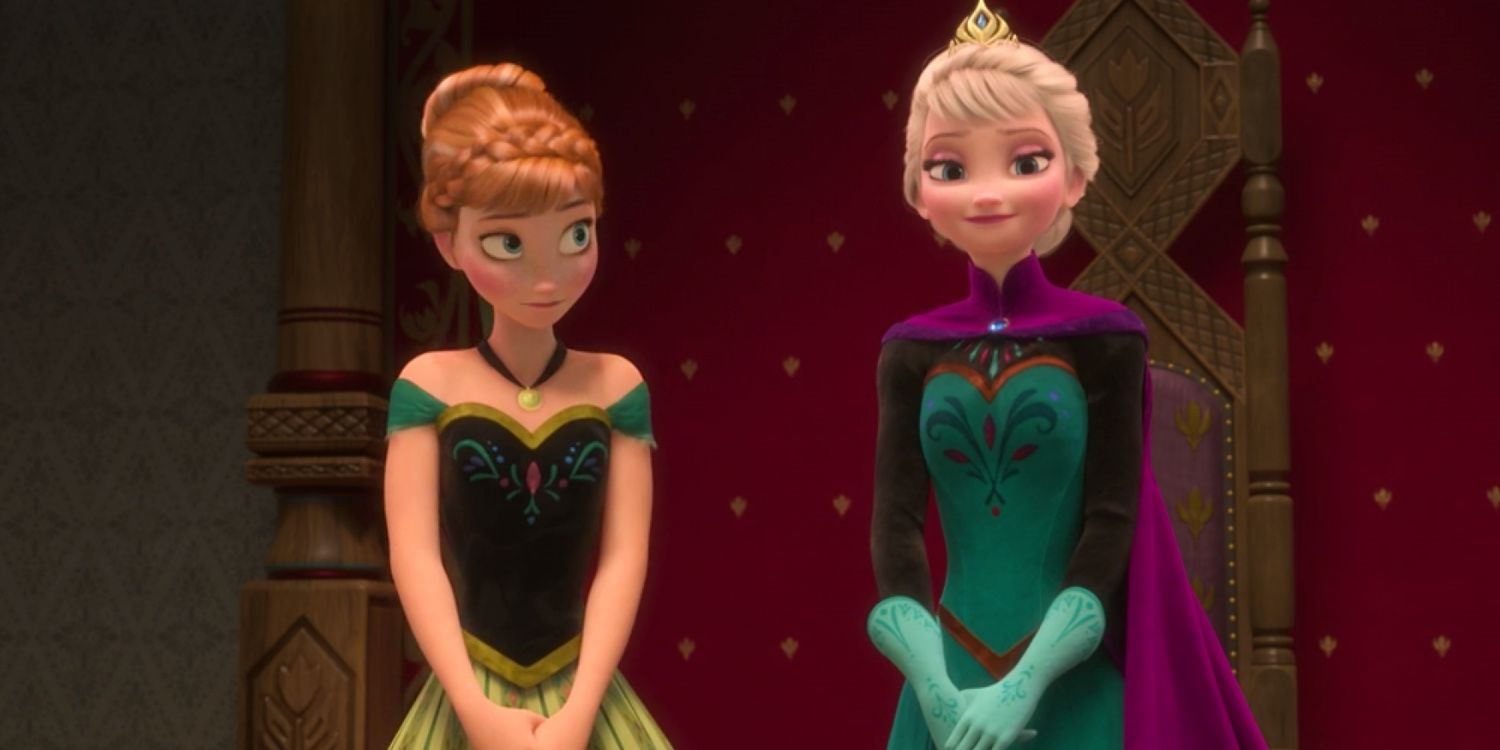Frozen was an instant sensation when it first came out and has continued to be celebrated years later as the franchise produces short films and sequels to expand and grow the universe. One reason that the franchise has been so successful is that it deviated from the classic (but admittedly overused) tropes and storylines that audiences were used to seeing from Disney.
Instead, the film revitalized the genre and made room for new, more diverse Disney movies. Reddit user NightspawnsonofLuna compared Frozen to Wes Craven's classic, Scream, calling it the best non-parody "Meta-Fairy Tale Movie." While fans might find it an odd connection at first glance, the way the film played with and avoided tropes was a breath of fresh air for Disney, and is something that fans celebrate on Reddit.
Dressing Up For A Partner
Redditor wittyusername64 points out this scene in Frozen II, where Kristoff, Olaf, and even Sven dress up in their aristocratic best for Anna's coronation. Kristoff has plenty of moments that make fans swoon throughout the franchise but seeing him transform himself to fit Anna's aesthetic was a nice change from the usual Disney and rom-com convention that the girl has to change to fit her man's ideal.
So much of modern media tells women that they need to be perfect and change themselves to fit in. Seeing this trope on the other foot was a fresh take, and having the qualifier that the change was only for an hour told boys and girls alike that while dressing up for a partner can be nice from time to time, it isn't necessary for them to fundamentally change themselves or their style in the long-term.
Saving The Love Interest From Wolves
Reddit user CreativeKnowItAll brings up this classic scene from Frozen, when wolves come after Anna and Kristoff. In contrast to films like Beauty and the Beast, where the male lead has to rescue the princess from wolves, Anna can take care of herself and her love interest. As CreativeKnowItAll says, "Anna just lit a sleeping bag on fire and threw it at the wolves."
While most audience members will never have to worry about who is responsible for saving their partner from wild animal attacks, this is just one of many moments where Frozen drew on a "male-protection" scene from earlier films and flipped it on its head to empower their female audiences.
Subverting Princely Values
As Kamzil118 points out, one critical thing that Frozen did was it "overturned the typical good noble prince throughout Disney's history." For the most part, men existed in Disney films to be handsome, rescue women, and generally be perfect and assumed good from the get-go. When audiences were introduced to a charming prince, just after Anna sang about finding love, they knew where the plot was going.
However, their expectations were flipped on their heads when Hans ended up betraying Anna and leaving her to die, one of the worst things a Disney prince has ever done. While other Disney princes can be criticized by modern values, Hans was just power-hungry and evil, a complete twist on the usual selfless and loving prince ideal.
The Surprise Villain
While fans discussed how Frozen would be different if it was made at a different time, they focused on the subversion of expectations with the more nuanced villain that the film had. Redditor LittleYellowFish1 pointed out the surprise factor as a refreshing deviation from the trend, stating that, were the same film made in the 90s, "Hans would either not be a villain at all, or they’d blatantly telegraph him as being one from the start, like Gaston."
Beauty and the Beast was subversive in its own right in the 90s for having a popular, handsome man be the villain, but that narrative was pushed early on. They needed to spend the entire film convincing audiences that Gaston could be the villain. Frozen, on the other hand, lived in a world where the handsome man could be a villain, but he still wasn't expected to be one. Leaving that subversion as a matter of surprise shows how much Disney has grown from more straightforward narratives.
Love At First Sight Is Wrong
Frozen is one of relatively few movies where the hero falls in love with a villain, and is rarer still for it being a point of horror rather than intrigue for the audiences. But this horror was useful because it pushed home the fact that love at first sight was wrong.
Redditor memristormask8 explained how this worked structurally, stating, "the 1st half deconstructs tropes by showing the causes and consequences ignored by prior works (especially 'love at first sight' with Hans), and the 2nd half reconstructs these tropes by amending them into better versions (i.e. the 'act of true love' is by a sibling, not a romantic interest)." This structure allowed them to get away with a lot of their subversion while keeping happy endings and exciting adventures.
Selflessness > True Love's Kiss
This was the most commonly cited subversion that Frozen played with, with multiple Redditors commenting on the change and what it meant. User melodylee515 summed up the comments best: "True loves kiss doesn’t win this one, it’s actually a selfless love for someone you truly care about. It’s not about romance, it’s about putting others before yourself. There’s nothing wrong with a classic fairytale ending, but it’s refreshing to see an example of love winning in the relationships you have with everyone else around you too."
Other redditors like elishash and No_bUrGeR emphasized the importance of that selfless love being familial love, which is a further subversion because Disney movies so rarely get the opportunity to explore families, as parents are often either the villain of the story or dead.
Happily Ever After Apart
The most classic phrases with fairy tales are "Once upon a time" and "they all lived happily ever after." But the Frozen franchise was willing to even mess was these core fundamentals of the genre. This was pointed out by Boronickel, who said, "There was a subversion of the Happily Ever After trope though, and that was the sisters' separation. It basically broke the fanbase and that the writer didn't even attempt to address it alludes to its effectiveness."
While fans are divided on whether or not they want a world where Anna and Elsa are apart, it was a very effective change to the biggest trope of a Walt Disney movie, and it proved that fans can still be surprised by the way that a classic fairy tale adaptation ends.
Centering The Women
The most important trope subversion that fans appreciated was the fact that Frozen focused more on women than men. Research has found that even in recent Disney movies, women speak less than men in their own movies. While men still had a large amount of dialogue in Frozen, they were certainly not at the center of the movie. This is shown by Anna's relationships with both Hans and Kristoff being overshadowed by her relationship with her sister.
Redditor jimmyhoffa523 broke down all of the ways this broke from traditional male-dominated Disney tropes, saying, "It is about two sisters and their relationship to each other. It has no trouble with the Bechdel test. Anna doesn't get married. Elsa has super powers and both sisters remain fiercely independent at the end of the film. Men are not essential."

